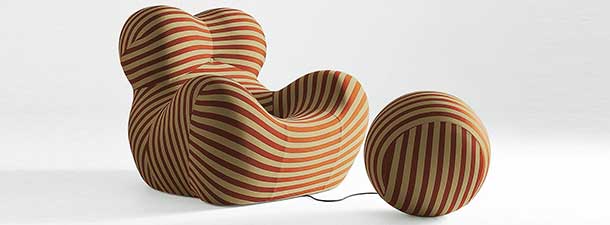
Work: Labor Est?
June 1, 2013
In The Land of the Morning Calm
June 1, 2013This is the reoccurring dream
Born in the dreary gap between
What we have now
And what we wish we could have…
Joni Mitchell,
from “The Reoccurring Dream”, 1988
S
Sex sells. It is common knowledge nowadays that advertisers and marketing companies use the power and longing of desire to sell the public everything from toothpaste to cars. Beyond the hyperbole and seductive imagery, though, our attitudes remain fairly constant as to whether we actually need the product, rather than merely want it. The difference plays with our psychological structures and speaks to our inner core, as if we were all aesthetes seeking out the beauty and truth in something, as its basic principle.
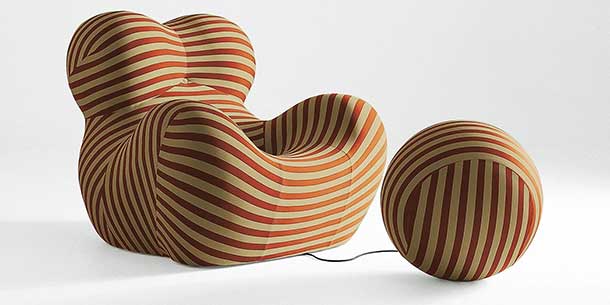
Sofa, B&B Serie Up
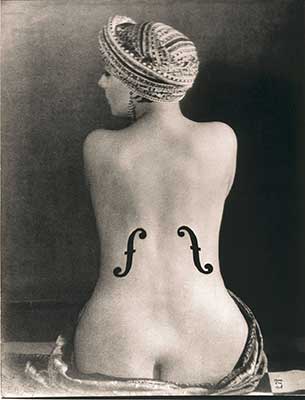
Le Violon d’Ingres, 1924 by Man Ray
(Gruber Collection)
Ludwig Museum Cologne, Germany.
Desire is at the heart of both our needs and wants and it is to this sense that we often turn when faced with the option of having something or letting it go. Across the centuries, philosophers have applied rational thought to desire, believing that it is the guiding principle of all human action. When we set out to obtain something or someone, we put in action a series of steps in order to achieve the desired outcome. If that is the case, does the designer intentionally design with the desire of the viewer (or user) in mind or is desire in the eye of the beholder?
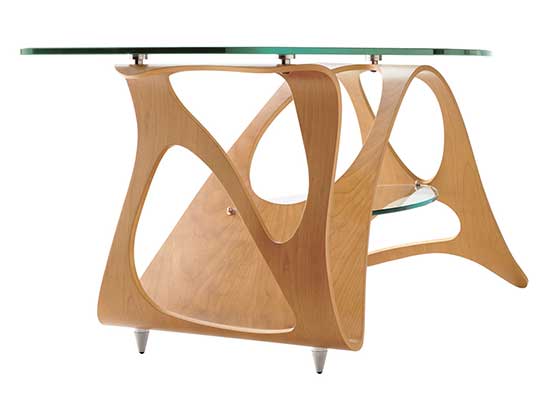
Coffee table “Arabesque”
design by Zanotta
The initial consideration of any designer – whether product, fashion, graphic or web – is to create something that will fulfil a need or requirement. The second is to improve on that need or requirement, giving us the confidence to take the steps needed in our pursuit of desire. Psychoanalyst Sigmund Freud believed in unconscious desires and theorised that a person could only suppress these desires for so long before they surfaced, demanding our attention. Design is, therefore, in a powerful position to be able to express unconscious desires and make them acceptable to the wider face of society. In fashion, fabric clings to the body, daring others to become an unwitting voyeur. Or with judicious cuts and drapes, the designer can provide the wearer with glimpses of revealing flesh, tempting the onlooker. Desire can be provoked, not only by what is revealed, though, but also by what is hidden. The power of suggestion makes desire more intense.
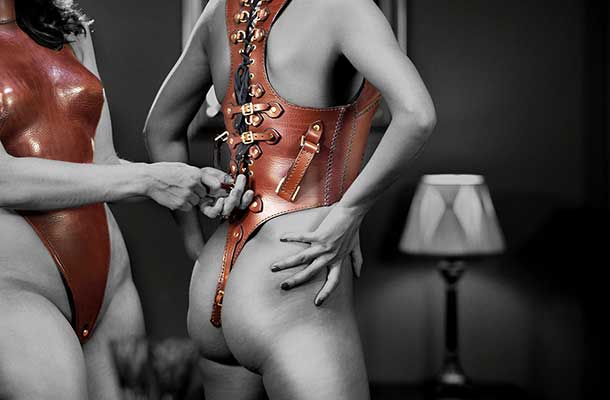
The Suit 068
cropped high
The Surrealist artist Salvador Dali translated his fascination with the actress Mae West into a three-dimensional object of practical use for patron Edward James. The lusciousness of the full lips in red satin has strong sexual overtones. And while it is not the most comfortable sofa, the sitter readily participates in a suggestive act. It is an idea that continued to proliferate throughout the twentieth century, as sexual tastes and mores became liberated.
Italian design maestro Carlo Mollino lived his life through his work. All his projects are inextricably linked to the thrills of speed, racing, skiing, flying and his passion for women. He believed in the fantastical in life and how wondrous life could become, once you had given yourself up to it. Infusing his work with his passion, we see the links formed between his imagination and the intellectual aptitude he displayed when designing against the strict rigours of Modernism. Whether it was architecture or furniture, Mollino produced sensuous and opulent designs, redolent of the energy of the female form.
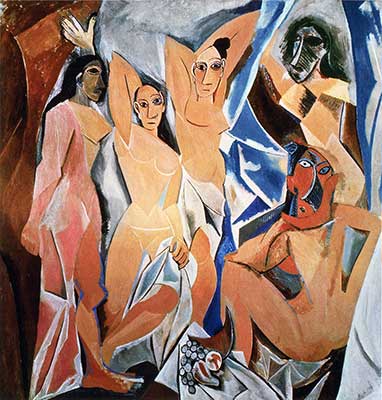
Les Demoiselles d’Avignon.
Pablo Picasso 1907
Moma. New York City
Design of the 1960s exploited the burgeoning sexual liberation and sensuality of a new generation. In 1969, British Pop artist Allen Jones exhibited his infamous set of erotic sculptures: a chair, a table, and a hat stand featuring women wearing bondage clothing. In what is known as forniphilia, which is the sexual objectification of someone’s body through incorporation into a piece of furniture, the message and relationship were explicitly clear. Helping to reinforce the symbolism was his choice of materials: the Blow Inflatable armchair for Zanotta in shiny PVC, or Gaetano Pesce’s Up Series chair for C&B Italia, resembling the swollen forms of the female body, tightly clad in stretched fabrics, are both linked to fetishism. Whether Jones’s sculptures are intended as art or not is open to debate, but it certainly would not be the first medium that expressed the thrill of desire within the viewer.
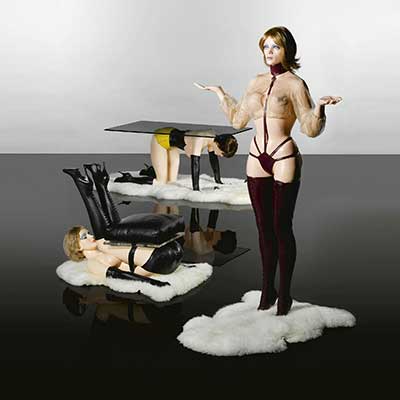
Allen Jones Furniture:
Table, Chair, Hatstand 1969
Painting and photography have long evoked the unspoken links between art and sex, at times when merely saying the word aloud was often considered taboo. Man Ray (another Surrealist artist) produced the photograph Le Violon d’Ingres which showed a woman’s back with the holes from a stringed instrument, suggesting that it was something with which to play, as well as appreciate. In painting, the nude was often elevated to classical status and thereby exalted to more than mere titillation. The most sexual of artists though, Picasso, produced Les Demoiselles d’Avignon in 1907, in which the subjects stare out in an almost confrontational manner, asserting their nudity and sexual prowess.
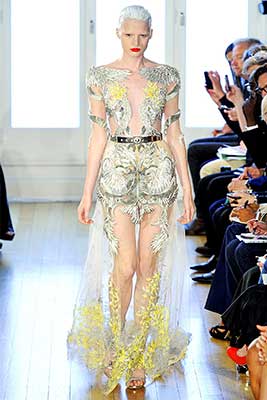
Julien Macdonald SS12
By the turn of the 21st century, desire had been enjoyed within an open-minded and freethinking environment for almost fifty years. Thoughts had been expressed and theories had been tested, pushing the previously set boundaries through all tastes and judgments. In consequence, we have developed a more sophisticated approach to the suggestive expression of wanton desire. The Dutch designer Anthony Kleinepier stated: “My works have the desire to be furniture.” In 2004, he created the “Dickie” seat. Depending on how the piece is being used, it can suggest either flaccid or erect male genitalia. The wool fabric covering, however, is loose, soft, and warm to the touch rather than cold and hard, like the plastics of earlier suggestive work.
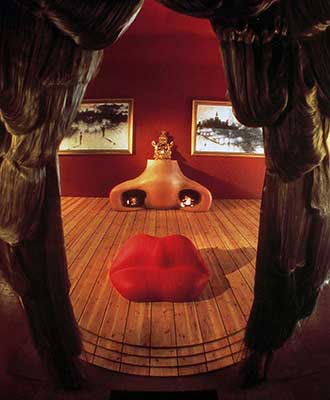
The ‘Dalilips’ Sofa by Salvador Dali
It is through the use of carefully considered materials, that desire is best experienced. Our sense of touch becomes essential when sight is not enough or we need to understand something fully. Of all the senses touch is seldom experienced alone, yet it provides us with the most immediate and real of responses. Desire can be both demanded and expressed through the sensation of touch.
In their collection of erotic clothing, furniture and accessories, Godfrey Knight Designs create some of the key elements in enabling us to understand what it is to desire and be desired. The simple yet luxurious materials used, including gold, silver and leather, speak of a tactile longing that needs to be touched, caressed and stroked.
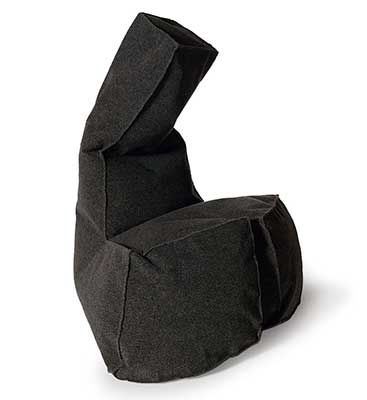
Moooi Dickie Lounge Chair
In a world of increasing technology, where interaction relies on the touch of a fingertip, a swipe across a screen or speaking in monosyllabic tones, design has become convenient. All our needs and desires can be found in one place and at the lightest of touches. They have become intuitive, as devices second-guess our preferences based on previous experiences. Yet desire is more than what we have already experienced. It is a longing for something yet to be explored and savoured. It is a visceral feeling that cannot be rationally explained. It is the hidden as well as the exposed.



